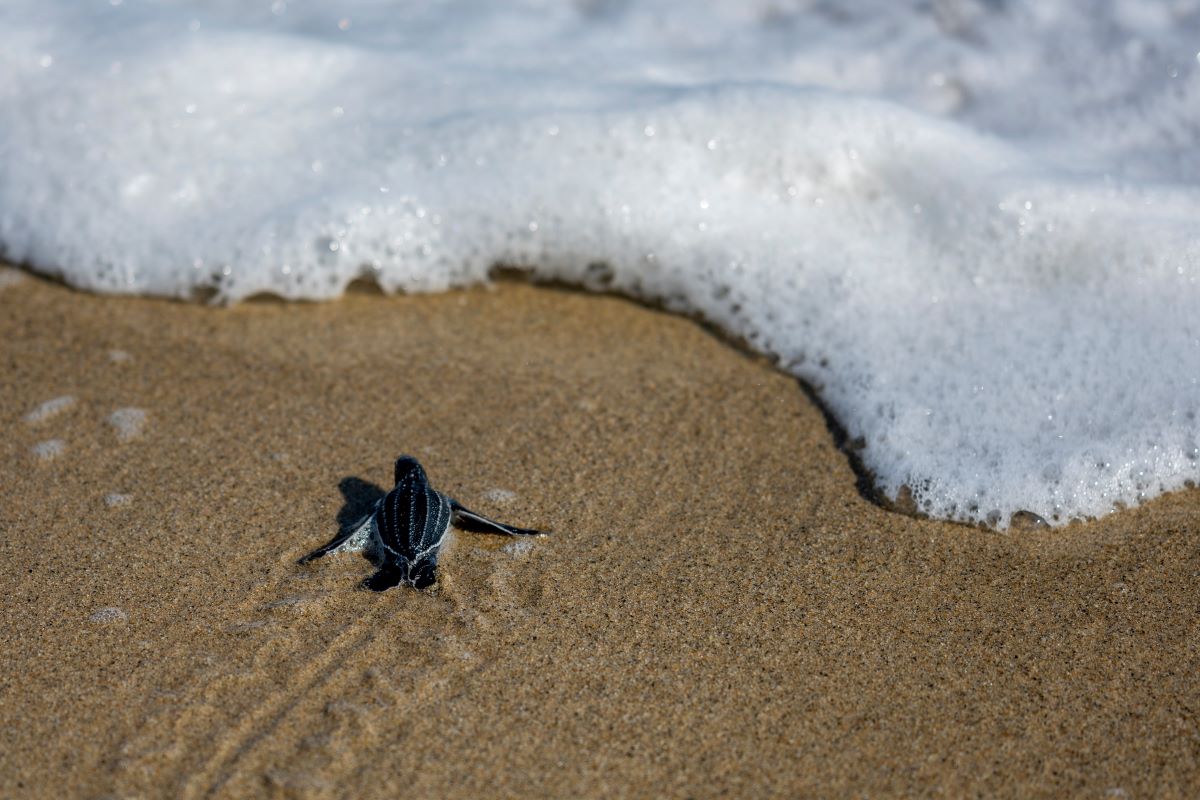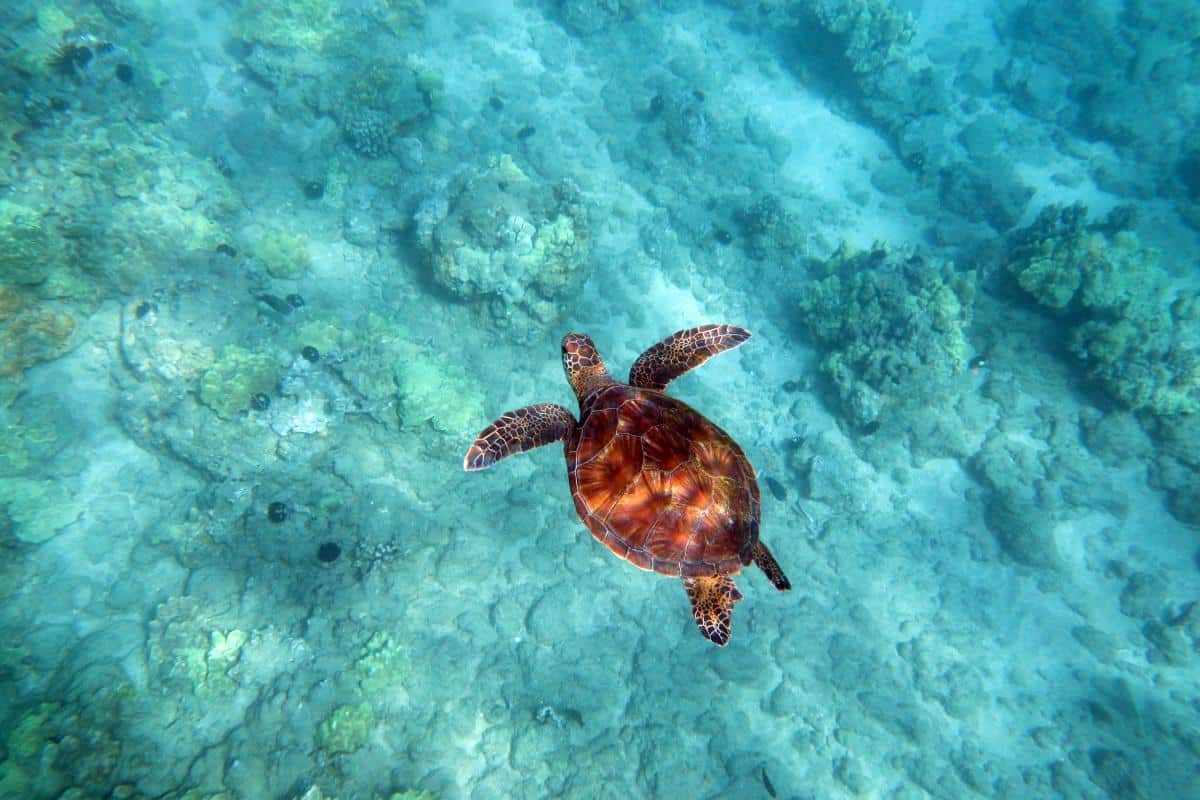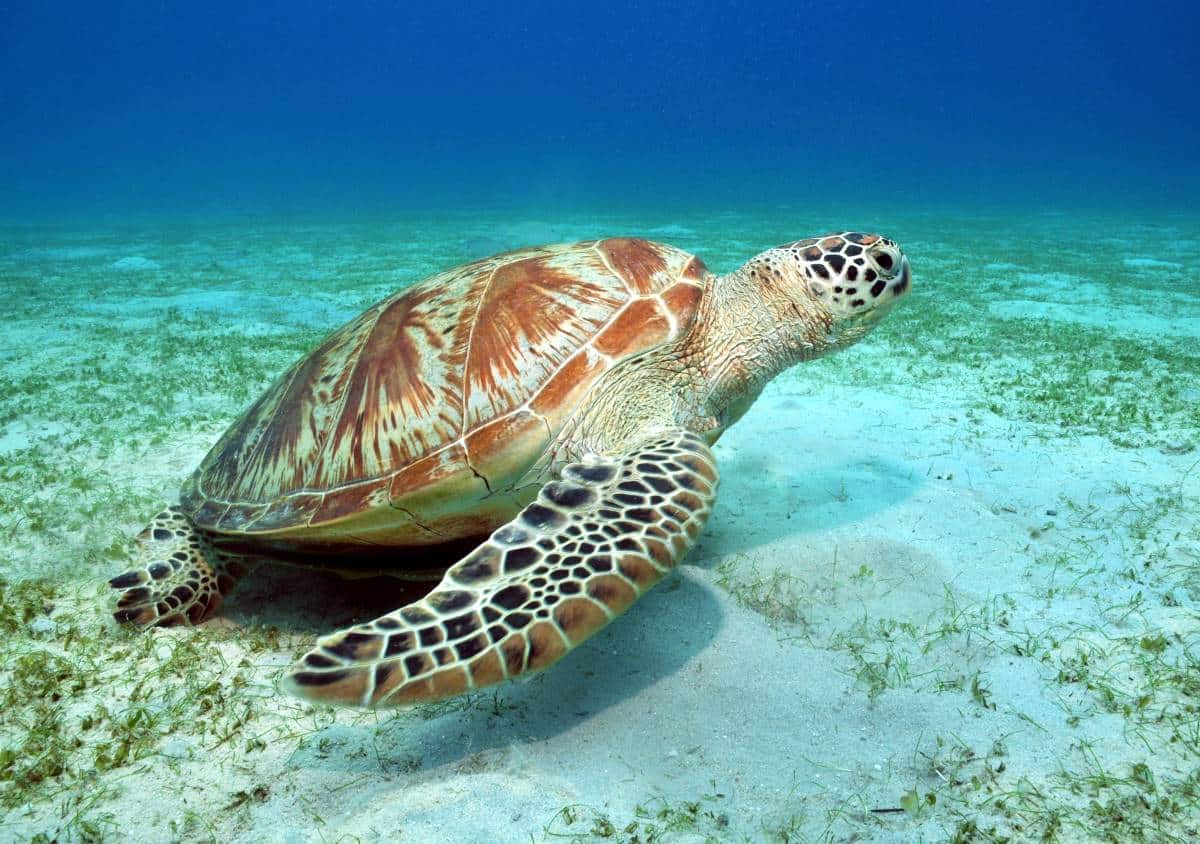the essentials in brief
Yes, aquatic turtles are a popular choice for beginners as they are comparatively easy to care for and take up little space. Find out here which types of sea turtles are suitable for beginners...
You need a suitable aquarium or terrarium with sufficient water and land area. You should also provide warmth, light and adequate nutrition. Here you can find out everything about the attitude...
Aquatic turtles are semi-aquatic animals and can survive out of water for short periods of time. However, it is recommended not to leave them out of the water for more than 30 minutes a day.
Water turtles are fascinating reptiles that are an interesting option for both beginners and experienced keepers. In this guide you will find out everything you need to know about the posture, attitude, Care and Features of sea turtles. Whether you are just starting out or already have experience with reptiles, here you will get a comprehensive insight into the world of aquatic turtles. We answer frequently asked questions, highlight important aspects of husbandry and give valuable tips on care. Immerse yourself in the fascinating world of sea turtles and find out how you can offer your little darling a species-appropriate home.
Choosing the right species: Different species of aquatic turtles

There are many different species of sea turtles, and choosing the right species is critical to successful keeping. Each species has its own characteristics and needs, so it's important to do your research before making a purchase. Here are some popular aquatic turtle species to consider:
Red-Eared Slider
This aquatic turtle species is one of the best known and most popular types for keeping pets and originally comes from North America. They are distinguished by their distinctive red patches on their cheeks, which distinguish them from other species. Since they are relatively undemanding and are adapting well to captivity, red-eared sliders are often considered beginner animals empfohlen.
Yellow-eared Slider
Like the red-eared slider, this species is native to North America. She has yellow streaks or spots on her cheeks that gave her the name. Yellow-eared sliders are too suitable for beginners and relative pflegeleicht.
mute turtle
Native to North America, this species of sea turtle has a distinctive hump on its dorsal shell that gives it a distinctive look. Mute turtles are generally smaller than other species and need an aquarium with sufficient swimming space and hiding places in the land part. They are for her Activity and curiosity famous.
Eared turtles of the genus Graptemys
These turtle species are known for their impressive patterns and markings on their shells. They are usually something more demanding in posture and require special water and land conditions. Eared turtles of the genus Graptemys are very popular with experienced keepers and are often considered the most demanding species.
There are many other species of aquatic turtles, from the impressive alligator turtles to the tiny folding turtles. Each species has its own characteristics and needs. It is therefore important to obtain comprehensive information before buying and to ensure that the keeping conditions can be met. Pay attention to aspects such as the turtle's maximum size, its preferred water temperature, and its dietary needs.
Note: It is also important to note that some aquatic turtle species are protected and subject to certain legal requirements. Find out about any legal restrictions before purchasing a particular species.
The optimal attitude: aquarium or terrarium?
Aquatic turtles usually need one Aquarium as the optimal housing environment. An aquarium provides enough space for an area of water for the turtles to swim and dive in. It also allows to control the water quality and create a suitable environment with the required water temperatures.
However, some aquatic turtle species require one Combination of water and land area. For these species, a terrarium can be a suitable choice. A terrarium provides both aquatic and land areas and allows the turtles to bask and have access to dry land. A terrarium can be customized with rocks, branches and plants to provide different areas for the turtles to climb and hide.
So whether you decide on an aquarium or a terrarium depends on the species of sea turtle and their special needs. Before you decide on a particular form of husbandry, it is important to do thorough research. So you can be sure that you can meet the needs of your turtle species.
Regardless of whether you are using an aquarium or a terrarium, it is important to ensure adequate Lighting, Heat source and humidity to care. Regular habitat cleaning, water changes, and water quality control are also important aspects of aquatic turtle health and well-being.
aquariums
Aquariums are one of the oldest forms of animal husbandry and were used as early as ancient Rome. The Romans created artificial pools to observe marine life such as fish and other aquatic life. These early aquariums were often filled with seawater and were supplied with water by means of aqueducts.

Creating the perfect environment
The creation of a optimal environment is vital to the health and well-being of aquatic turtles. This includes the right temperature, water quality and lighting. In order to create the perfect environment for your aquatic turtle, there are a few important aspects to consider:
Temperature
sea turtles are cold-blooded and therefore require an adequate heat source to regulate their body temperature. Here are some points about temperature to keep in mind:
- Water temperature: The ideal water temperature varies by turtle species, but is usually between 24°C and 28°C. You can use an aquarium heater to keep the water temperature constant.
- land temperature: Aquatic turtles also need a land area to bask on. The temperature of the land part should be slightly higher than the water temperature, usually between 28°C and 32°C. A heat lamp or heating mat can be used to achieve the optimum land temperature.
- Thermoregulation options: Make sure your aquatic turtle has both warm and cooler areas in its habitat so it can regulate its body temperature as needed. Place the heat source and land area so the turtle can choose between the different temperatures.
water quality
The water quality is a crucial factor for the well-being of aquatic turtles. Here are some guidelines for maintaining good water quality:
- Filtration: Use a suitable filter to keep the water in the aquarium clean. A good filter removes impurities and ensures good water circulation.
- water change: Perform regular partial water changes to reduce contamination and improve water quality. The exact schedule depends on the size of the aquarium and the number of turtles.
- Chlorine-free water: Always use chlorine-free water for the aquarium. You can treat tap water using water conditioners or by letting the water sit for at least 24 hours to allow the chlorine to evaporate.
Attention: Regularly check the water parameters such as pH, ammonia and nitrite levels. Most turtles prefer neutral to slightly alkaline water (pH around 7 to 8). Make sure the ammonia and nitrite levels are low, as high levels can be toxic to the turtles.
Lighting
Proper lighting is critical to and supports the well-being of aquatic turtles growth and their Health. Here are some important considerations about lighting:
- UVB lighting: Aquatic turtles need UVB radiation to synthesize vitamin D3 and ensure healthy bone development. Use a reptile-specific UVB lamp and place it so the turtle has direct access to UVB radiation.
- UVA lighting: In addition to UVB lighting, aquatic turtles also need UVA radiation to support their natural behavior and stimulate appetite. A full spectrum lamp or sunlight simulation can provide UVA radiation.
- Lighting times: Provide the turtles with a clear distinction between day and night. Use a timer control to ensure regular lighting for 10 to 12 hours a day.
Diet and Feeding: What Does a Sea Turtle Eat?
Turtles have one varied nutrition, which may vary depending on the species and individual needs. Here are some main foods that aquatic turtles eat:
- Plant-based diet: Aquatic turtles feed on a wide variety of aquatic plants and foliage. These include, for example:
- duckweed
- Duckweed
- acharis
- Lettuce leaves (romaine lettuce, lettuce)
- spinach
- Kale
- Celery
- fresh parsley
Tip: Make sure you offer a varied mix of different vegetables to ensure a balanced diet.
- High Protein Food: Aquatic turtles also need proteins for their growth and development. High-protein foods include:
- Insects (e.g. house crickets, crickets, mealworms)
- Worms (e.g. earthworms, silkworms)
- snails
- Fish (in moderation, as a supplement to the main diet)
Protein sources should be provided in adequate amounts to meet the turtle's needs.
- Supplementary food: In addition to the main diet, aquatic turtles may also receive the following supplements:
- Turtle Pellets: There are specially designed turtle pellets that provide a balanced supply of nutrients. Choose high quality pellets suitable for aquatic turtles and use them as a supplement to their natural diet.
- Feed Supplements: Calcium and vitamin supplements can be used to ensure the turtle is getting all the necessary nutrients. Consult a veterinarian or reptile expert for proper dosage and use.

Turtles as fascinating pets
Turtles are fascinating pets that require special care. Choosing the right species, creating an optimal environment with the right temperature, water quality and lighting, and a balanced diet are crucial to their health and well-being. With attention, dedication and regular veterinary care, aquatic turtles can lead happy and healthy lives.
Sources
- https://herz-fuer-tiere.de/haustiere/aquaristik-terraristik/schildkroeten/haltung-von-wasserschildkroeten
- https://www.petbook.de/aquarium-terrarium/wie-alt-werden-wasserschildkroeten-als-haustier#:~:text=Wasserschildkröten gelten als relativ pflegeleichte,gerne mehrere Jahrzehnte betragen kann
- https://www.zierschildkroete.de/


